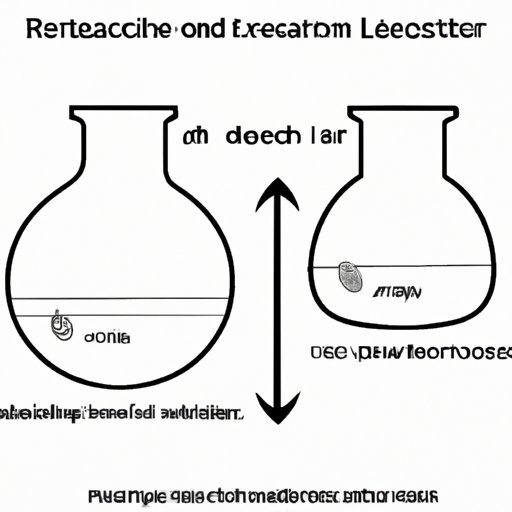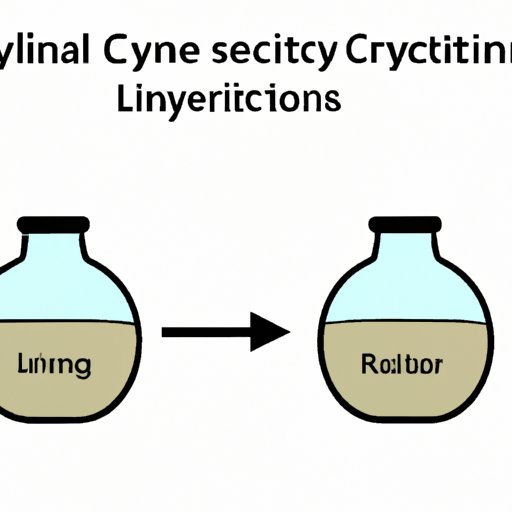Understanding Limiting Reactant in Chemistry Experiments
Limiting reactant is a fundamental concept in chemistry that is important for understanding chemical reactions. If you have taken a chemistry class, you’ve likely heard this term many times. However, the question is – what is a limiting reactant, and why is it so important in chemistry?
Understanding the Concept of Limiting Reactants in Chemical Reactions
Chemical reactions occur when different substances (known as reactants) combine to form new substances. When these reactants combine, they do so in specific proportions, governed by their respective chemical stoichiometric coefficients. Chemical stoichiometry is the relationship between the amounts of reactants and products involved in a chemical reaction.
A reactant which is entirely consumed first, hence restricts the amount of product that can form, is known as the limiting reactant. Thus, the limiting reactant is limited in quantity and completely consumes the other reactants in a chemical reaction.
The importance of determining the limiting reactant in a chemical reaction helps to measure the amount of product that can be formed.
How to Determine the Limiting Reactant in a Chemical Reaction
To determine the limiting reactant in a chemical reaction, follow these simple steps:
- Write down the balanced chemical equation for the reaction. This equation shows the proportions in which the reactants combine and the products form.
- Identify the number of moles of each reactant. Moles are a unit of measurement used to express the amount of a substance.
- Using the mole ratios from the balanced equation, find out which reactant will be consumed entirely first.
- The reactant which can form the least amount of product from the balanced equation would be your limiting reactant.
Why it is Important to Identify Limiting Reactants in Chemistry Experiments
Identifying the limiting reactant in chemistry experiments is vital for accurate yield determination. Without recognizing the limiting reactant during experimentation, one may fail to predict the appropriate amount of product that can be produced, which can lead to inaccurate results.
Moreover, the consumption of the reactant which is not the limiting reactant will become apparent, which can lead to wasteful consumption of costly resources.
How to Calculate Limiting and Excess Reactants in Chemical Reactions: An Example
Let’s look at a simple example to understand the concept of limiting reactants:
If 2 grams of hydrogen gas and 20 grams of oxygen gas are mixed and ignited, how much water can be formed?
First, let’s write the balanced equation of the reaction:
2H2 + O2 → 2H2O
Next, we must establish the number of moles of each reactant. To do this, we must apply the molar mass for hydrogen (1 g/mol) and oxygen (16 g/mol):
2 g H2 (1 mol / 2 g) = 1 mol H2
20 g O2 (1 mol / 32 g) = 0.625 mol O2
Based on the balanced equation, each mole of oxygen reacts with two moles of hydrogen to form two moles of water. Thus, the amount of water that can be produced would be limited by the amount of oxygen, making oxygen the limiting reactant in this chemical reaction.
To determine exactly how much water can be formed, we will calculate the number of moles of water:
0.625 mol O2 (2 mol H2O / 1 mol O2) (18 g / mol) = 22.5 g H2O
Thus, the experiment above will only allow the production of 22.5 grams when 2 grams of hydrogen and 20 grams of oxygen are mixed.
Common Examples of Limiting Reactants in Real-Life Chemical Reactions
Now, let’s discuss some real-life examples of chemical reactions involving limiting reactants.
The production of ammonia by the Haber’s process provides a great example of limiting reactants. Nitrogen and hydrogen are reacted under very high temperatures and pressures to yield ammonia gas. In this chemical reaction, nitrogen is the limiting reactant because it is present in lesser amount than hydrogen.

The Effects of Limiting Reactants on Reaction Yield and Efficiency
Limiting reactants have a significant impact on reaction yield and efficiency. The reaction yield is the amount of product you get after the reaction. The reaction efficiency is the percentage of product you get from the theoretical yield, that is, the amount of product that should have formed in theory from the reactants used.
When a limiting reactant is present in a chemical reaction, it will be completely consumed before other reactants. This means that the maximum amount of product that can form is limited by that reactant.
For instance, if you have four apples and six oranges and want to make a fruit salad that requires two apples and three oranges, your limiting reactant would be the apples, determining the maximum amount of fruit salad that you can make. Similarly, in chemical reactions, the amount of product that can be produced will always be limited by the reactant that is present in lesser number.
Limiting Reactants: A Beginner’s Guide to Chemistry Fundamentals
The concept of limiting reactants is important for understanding various chemical reactions and their products. To be able to understand this concept, here are some key chemistry terms and their definition:
- Reactants – substances that undergo a chemical reaction
- Products – substances formed as a result of a chemical reaction
- Moles – a unit of measurement used in chemistry to express the amount of a substance
- Stoichiometry – the study of quantitative relationships between reactants and products in a chemical reaction
- Balanced Chemical Equation – an equation that shows the proportion of reactants and products involved in a chemical reaction
Advanced Techniques for Determining Limiting Reactants in Complex Chemical Reactions
Determining limiting reactants in more complex chemical reactions can be challenging. However, one way to make the process simpler is to use a mole ratio approach. Below are some examples:
1. Multiple reaction steps processes
If a chemical reaction consists of multiple steps, combining the chemical equations from each step would result in the overall equation for the reaction. The reactant present in limited quantity in the overall reaction would be the limiting reactant.
2. Reactions involving dissolution
For reactions involving the dissolution of a solid in a liquid, the limiting reactant would be the reactant with smaller molar solubility co-efficient.
Conclusion
Limiting reactant plays a significant role in determining the yield and efficiency of a given chemical reaction. Using the formulas and procedures stated earlier, it becomes easier to determine the limiting reactant in a variety of chemical reactions. Therefore, it is important to consider the concept of limiting reactants when planning and performing experiments in a chemistry laboratory to maximize their results.
Understanding this concept is critical for anyone interested in chemical engineering, analytical chemistry, and materials science, as well as science students in general.
